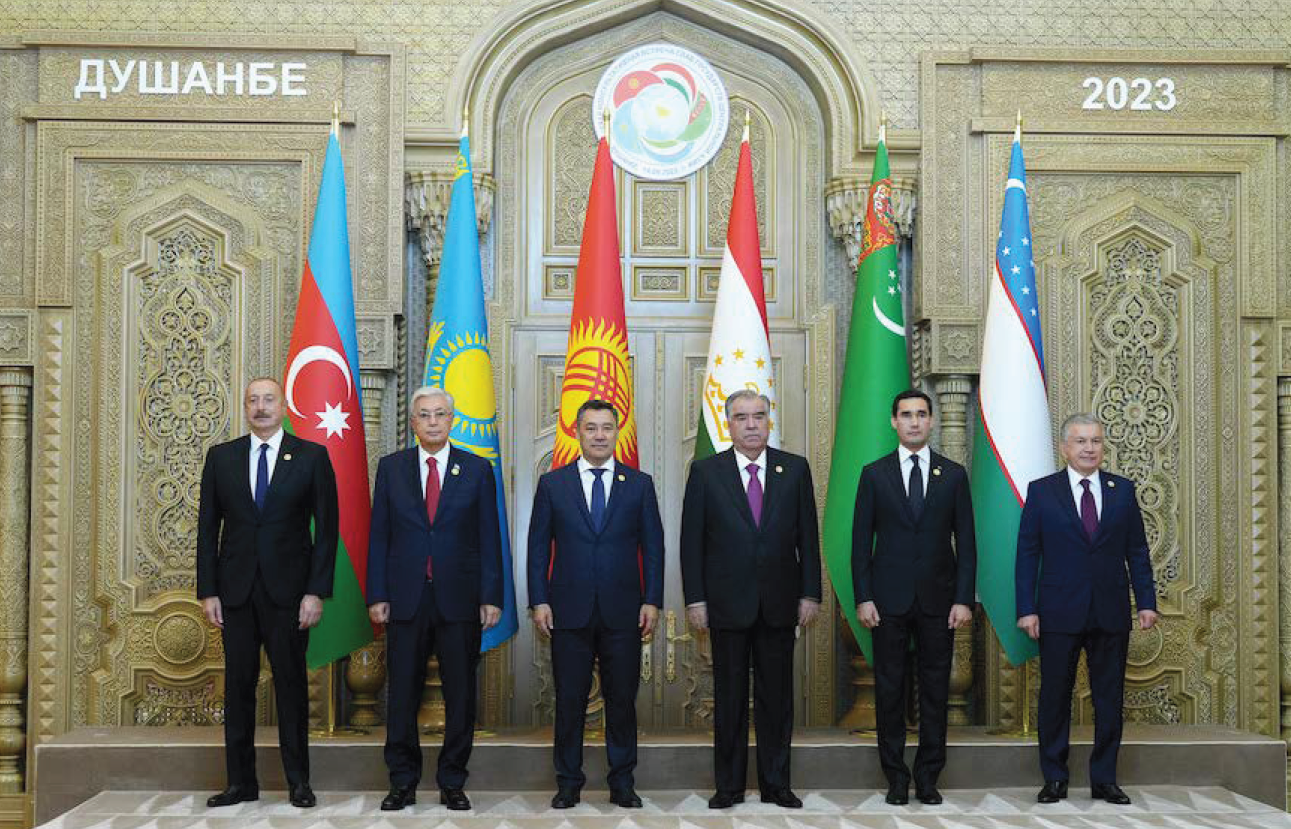Central Asian Regional Interactions in a Changing Geopolitical Context
Download the report.
The five Central Asian states are now confronting a new geopolitical landscape in the wake of Russia’s February 2022 invasion of Ukraine. Many experts have remarked on the noticeable increase in diplomatic engagement of Central Asian countries by outside powers in the past two years, tying this development to a potential waning of Russian influence in the region as a result of the war. Notably for intra-regional relations, much of this diplomatic activity is centered on trade and connectivity as the United States, the European Union, China, and other countries seek to bolster supply chains that avoid Russia. At the same time, Russia has continued to engage Central Asian countries at the highest levels, with Russian President Vladimir Putin making multiple visits to the region since February 2022.
Experts have long described Central Asia as one of the world’s “least integrated” regions. Initial efforts at regional cooperation in the 1990s and early 2000s were followed by over a decade of stagnation. Outside observers have noted the low level of trust among Central Asian governments as a significant factor hampering regional cooperation. But regional relations received a new impetus following Uzbekistan’s leadership transition in 2016. Since assuming power, President Shavkat Mirziyoyev has promulgated a policy of “good neighborliness” that identifies Central Asia as “the main priority of Uzbekistan’s foreign policy.” This shift in Uzbekistan’s foreign policy brought an intensification of high-level regional cooperation, and Central Asian countries made progress on resolving certain long-standing issues, including the demarcation of some national borders. When the four Central Asian heads of state met in Astana, Kazakhstan, in March 2018, it marked the first such gathering in almost a decade and inaugurated an annual consultative meeting that has been held five times. The fifth consultative meeting held in September 2023 illustrated that the Central Asian states had achieved some tangible results in deepening regional dialogue and cooperation. Although the Covid-19 pandemic and related border closures presented challenges for regional integration efforts, high-level contacts continued.
These developments raise the question of whether and how intra-regional relations have shifted in the context of both regional developments and external geopolitical changes. Our project aims to examine and quantify the intensity of high-level inter-regional interactions. How has the intra-regional high-level cooperation in Central Asia changed over the recent years? This is the main research question that drives this project.
In order to examine this and related questions, we compiled a dataset of bilateral and multilateral intra-regional events among (a) presidents (P), (b) prime-ministers (PM), and (c) foreign ministers (FM) of Central Asian states. By ‘events’ we refer to any kind of interaction between these officials of the five states, including visits, meetings, phone calls, video calls, and telegram letters. Our dataset covers interactions for four years: 2015 – before Uzbekistan’s presidential transition; 2019 – after the presidential transition in Uzbekistan and before the Covid-19 pandemic; 2022, and 2023 – after the Covid-19 pandemic and Russia’s invasion of Ukraine.
The dataset reveals a marked shift in the dynamics of regional relations, with a significant increase in the number of high-level interactions and a move toward more substantive forms of engagement. At the same time, most recorded intra-regional interactions occurred on a bilateral basis, rather than involving more than two Central Asian states. Our findings demonstrate that Central Asia’s intra-regional contacts remain driven by the presidents and show that Kazakhstan, Uzbekistan, and Kyrgyzstan are the most active players in high-level engagement among regional countries.
About the authors:
Aizada Nuriddenova is an Assistant Professor at the Department of Social Sciences, Suleyman Demirel University in Kazakhstan. Currently she is a visiting scholar at the Institute for European, Russian, and Eurasian Studies (IERES) at George Washington University. She holds a PhD in International Relations, specializing in Chinese foreign policy, from the School of International and Public Affairs at Jilin University in China. Her research interests are centered on Chinese foreign policy and regionalism in Central Asia.
Zhanibek Arynov is an Assistant Professor at the Graduate School of Public Policy. He first joined the School as a Postdoctoral Scholar in July 2019. Dr. Arynov obtained a Ph.D. degree in International Relations from the University of St. Andrews, UK. His research interests include Central Asian geopolitics, Kazakhstan’s foreign policy, EU-Central Asia relations, and international identity, image and perception studies.
This report is published as part of the “Kazakhstan Futures Program” with financial support from the Public Affairs Section at the U.S. Embassy in Kazakhstan.

